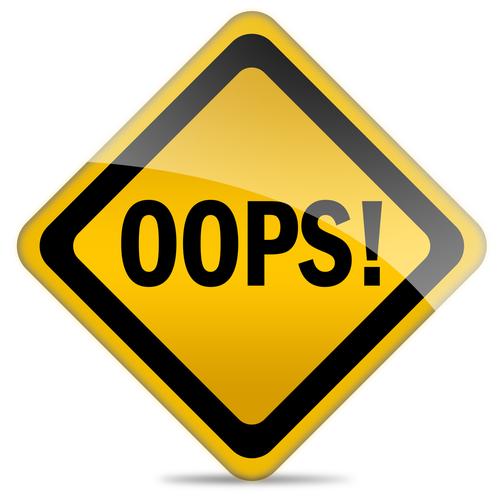
Blunders in Modern Play, Part 4
Several weeks ago I played in an excellent tournament organized by Dr. Walter High in North Carolina. The US Masters tournament attracted an extremely strong field with many GMs including Mamedov, Ramirez, Shabalov, & Jankovic - just to name few! Many players came from all over the world to get a shot at a norm. The organization of the tournament was at the highest level with free lodging provided for strong players, name tags, and chess sets with colorful LED clocks that made the playing hall look very cheerful!
I generally like playing in the South due to its hospitality... not to mention the world-famous BBQ!! Before and during the tournament we got a chance to try local BBQ places, including the famous Lexington #1 and Bib's BBQ, who are the Pitmasters champions this year! As local experts explained to me, Lexington-style BBQ uses vinegar-based sauce, which is also used as a base for so-called "red slaw", instead of commonly used mayonnaise. Here are the photos of me and my BBQ plate:


Ok, let's get back to the tournament - well... not quite yet to the tournament but rather to a hospitality suite where the players were welcomed after the games with free drinks and snacks, generously provided by the organizers. Here, the players usually analyzed the games or chatted about chess news. On the first evening, IM Faik Alekserov set up a study for us to solve, which turned out to be harder than we first thought. Within 10 minutes, GM Shabalov managed to reach the position at the end of the line in the following diagram. He found the subtle 2.Kd1! and the main attacking possibility by black.
Next, the study looks almost too simple, if 5.Kb2 is the solution and after 5...Bb3!! the 5.Kb2 move should be granted "??" as it loses the game. Curiously enough, a few days later this same position was in the hospitality room, but this time GM Diamant and WGM/IM Paikidze were trying their hands at solving it. And sure enough the position after 5.Kb2?? was at the board. They did find Bb3!! after some time but did not manage to produce the right solution on move 5. Anyways, here is the solution to the study, as Faik demonstrated on the first evening:
As for the tournament itself, my result was ok - a respectable 50% , which gained me several rating points and playing experience against strong opposition. I guess if I will talk about other people's blunders I might as well start with my own game. In the eighth round of the tournament I played strong IM Raja Panjwani from Canada with the black pieces. I expected the line of the King's Indian that happened in the game and got a very comfortable position as Black. In fact, I don't remember getting such a nice position in a KID for a long time, so naturally I was pretty happy and relaxed, spending not much time on the moves.
In the following position I wanted to wait for white to castle to start the kingside onslaught with ...f5. Naturally, I was looking for moves that can further improve my position. 18...b6 and 18...Qe7 came into mind. In fact, if I realized that my pieces are already ideally placed that that 18...f5 idea can no longer be improved, I would have played this move right away. IM Panjwani was planning to reply with g4, however after g4 White's dark squares collapse and White will have trouble with his "centralized" king. Instead, I played the careless 18...b6 and didn't bother to check the lines after his 19.b4 and 20.axb4. I played 20...Na4 automatically after which I am in danger of losing the knight. There is only one chance to complicate matters (as pointed out by the engine), but I did not manage to find it and lost the game.
There were plenty of interesting games in the tournament but I will highlight only a few. In the second round, there was GM blood shed by youngster IM-elect Ostrovskiy. GM Jankovic played the opening very ambitiously, which required extreme precision in the middlegame. He didn't finish development, got a poorly placed bishop on d2 and a weak king for an extra pawn. Moreover, Black got the two bishops and threatened to opening the position. Already after Black's 13th move ...Re7! White had only one option to maintain the balance, and it was far from obvious: 14.Bc3. Instead, GM Jankovic decided to go for a piece sacrifice that was absolutely bad and can be called with confidence a blunder!
The next game is another GM upset, this time by WGM Abrahamyan who got her IM norm in this event. The game was turbulent as is often the case with the Benoni opening. GM Rohde managed to get hold of the initiative with a standard b4-break and didn't let it slip until a blunder before move 30. Let us fast-forward through the opening and middlegame moves (which I annotated anyway) and concentrate on the critical position after White's 28.Rxd7!.
The position is far from standard and it is hard to grasp what is going on. Both sides have passed pawns; however, Black's are blocked by the queen. On the other hand White just eliminated Nd7, which was a blocker for the d6-pawn. Opposite-colored bishops are there too, which gives the advantage to the side with the initiative - White in this case. White also owns both the 7th rank and the b-file. Black's queen is active and the rook on the c-file supports the passed pawn from behind.
Given all this, White's position should be evaluated better but by no means winning! However, after the Black's next blunder the position becomes very close to losing, if not losing right away. Obviously, the question is where to retreat with the bishop: e5, f6 or g7. More precisely e5 or f6, as retreating it to f6 looks by far more superior than g7, due to Black's king having the g7-square to himself. From e5 it ties the rook to d7 to the defense of the d6 pawn, while from f6 it controls the e7 and d8-squares.
Now that we understand the problem, the next question is: what is:White going to do? A Rxf7 combination comes to mind, after which a d7-push will win the rook back and put some pressure on Black. If the d-pawn is gone then Black's position will be more than fine, hence Black must get something significant in return. After taking on f7 the black king will be exposed and White can somehow use this to his advantage.
It turns out that the move WGM Abrahamyan played in the game, 28...Be5, is a blunder as it allows White to win the c3-pawn with an intricate intermediate move that forces the black king to block the bishop's retreat. With limited time, I wonder if even strong GMs can find the subtle difference between 28...Be5?? and 28...Bf6!, which exists in allowing black to defend against Rb7+ with Re7. Later, GM Rohde did not find the intermediate move 30.Rb7 and instead of a winning endgame he got one close to equality and with a further blunder he even managed to lose it.
The last position that we will consider is this absolutely winning (-12 is the evaluation by Houdini 3) position by GM Josh Friedel against our hero from the first example IM-elect Ostrovsky. I have the privilege of being Josh's close friend and benefit from him sharing his thoughts on the blunder than happened in this game.
Why is Black winning? White is down a pawn and his king is getting checkmated - the occupation of the g-file by all black heavy pieces is deadly. Spend some time figuring out the easiest win for Black.
31...Rg1 is the most obvious solution, which Josh had seen too. After 31...Rg1 32. Rg1 Qh3+ he didn't want to play the two rooks vs. queen endgame after 33.Qg2, however it turns out that if he extended the line two moves further he would have seen that one of the rooks is getting lost after 33...Rxg2 34. Rxg2 Qxf3 and White has no way of defending two rooks at the same time. I am sure if given this position as a study, GM Friedel would have found this line within one minute, but during the game sometimes we face the most unexpected decisions that our mind produces. Anyways, he settled for the equally winning 31...Rg3 and after 32. Rd3 he played the horrible blunder 31...Rg1, which gives Black an only slightly better endgame. Here is what Josh had to say about the issue at hand:
"The blunder came out of nowhere. I spent five minutes calculating Rg1, looked at all tempo moves etc. but missed Qg2, which is strange because I saw it on the previous move with the rook on d1 and amusingly, there it actually wins for me anyway, whereas with the rook on d3 it doesn't but I have a million ways to win and White has no threats so to blow such a position is inexcusable".
The lines discussed above and the rest of the game, where GM Friedel showed great class and technique, reaching a winning position once more (and again blundering) are shown below.
Overall, I am very happy to have had this tournament experience, and I thank the organizers for making it possible. Next year this event is definitely on my calendar! We will continue with the topic of blunders in next week's article.
RELATED STUDY MATERIAL
- Watch GM Eugene Perelshteyn's video Thematic Openings: The Dark Square Repertoire - Part 1;
- Check out the classical variation of the Benoni;
- Read GM Magesh Chandran Panchanathan's article Material for Initiative.






